Foundation Year
The English curriculum is built around the three interrelated strands of language, literature and literacy. Teaching and learning programs should balance and integrate all three strands. Together, the three strands focus on developing students' knowledge, understanding and skills in listening, reading, viewing, speaking, writing and creating. Learning in English builds on concepts, skills and processes developed in earlier years, and teachers will develop and strengthen these as needed.
In the Foundation year, students communicate with peers, teachers, known adults and students from other classes.
Students engage with a variety of texts for enjoyment. They listen to, read and view spoken, written and multimodal texts in which the primary purpose is to entertain, as well as some texts designed to inform. These include traditional oral texts, picture books, various types of stories, rhyming verse, poetry, non-fiction, film, multimodal texts and dramatic performances. They participate in shared reading, viewing and storytelling using a range of literary texts, and recognise the entertaining nature of literature.
The range of literary texts for Foundation to Year 10 comprises Australian literature, including the oral narrative traditions of Aboriginal and Torres Strait Islander Peoples, as well as the contemporary literature of these two cultural groups, and classic and contemporary world literature, including texts from and about Asia. Literary texts that support and extend Foundation students as beginner readers include decodable and predictable texts that range from caption books to books with one or more sentences per page. These texts involve straightforward sequences of events and everyday happenings with recognisable, realistic or imaginary characters. Informative texts present a small amount of new content about familiar topics of interest; a small range of language features, including simple and compound sentences; mostly familiar vocabulary, known, high-frequency words and single-syllable words that can be decoded phonically, and illustrations that strongly support the printed text.
Students create a range of imaginative, informative and persuasive texts including pictorial representations, short statements, performances, recounts and poetry.
(source: www.australiancurriculum.edu.au)
Achievement Standard
Receptive modes (listening, reading and viewing)
By the end of the Foundation year, students use predicting and questioning strategies to make meaning from texts. They recall one or two events from texts with familiar topics. They understand that there are different types of texts and that these can have similar characteristics. They identify connections between texts and their personal experience.
They read short, decodable and predictable texts with familiar vocabulary and supportive images, drawing on their developing knowledge of concepts of print, sounds and letters and decoding and self-monitoring strategies. They recognise the letters of the English alphabet, in upper and lower case and know and use the most common sounds represented by most letters. They read high-frequency words and blend sounds orally to read consonant-vowel-consonant words. They use appropriate interaction skills to listen and respond to others in a familiar environment. They listen for rhyme, letter patterns and sounds in words.
Productive modes (speaking, writing and creating)
Students understand that their texts can reflect their own experiences. They identify and describe likes and dislikes about familiar texts, objects, characters and events.
In informal group and whole class settings, students communicate clearly. They retell events and experiences with peers and known adults. They identify and use rhyme, and orally blend and segment sounds in words. When writing, students use familiar words and phrases and images to convey ideas. Their writing shows evidence of letter and sound knowledge, beginning writing behaviours and experimentation with capital letters and full stops. They correctly form known upper- and lower-case letters.
(source: www.australiancurriculum.edu.au)
- Plus Plan
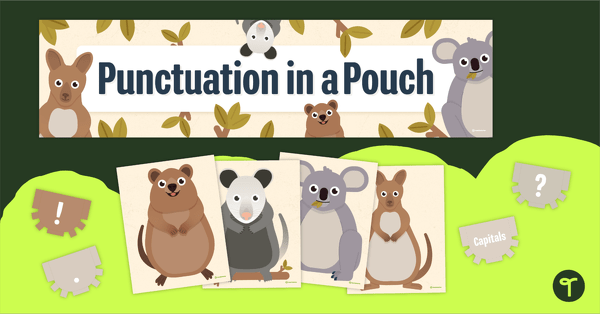
Punctuation in a Pouch
A fun marsupial-themed classroom display to help your students correct sentence punctuation.
- Plus Plan
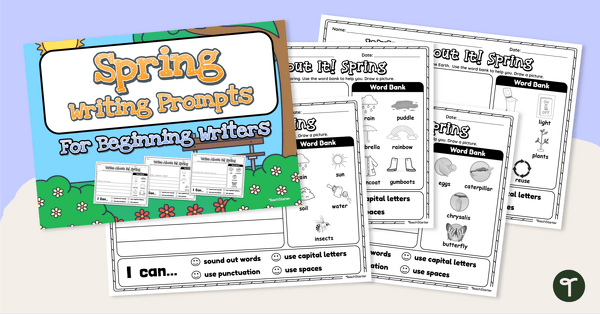
Spring Writing Prompts for Beginning Writers
Use the season of spring to inspire writing in your early years classroom.
- Plus Plan
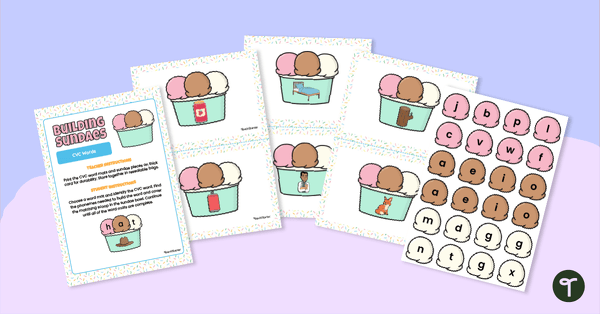
Building Sundaes - CVC Word Mats
Segment CVC words with this set of 14 word mats.
- Plus Plan
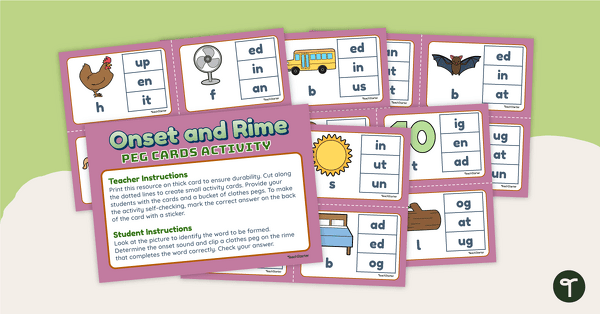
Onset and Rime Peg Cards
Form words by blending onsets and rimes using these hands-on peg cards.
- Plus Plan
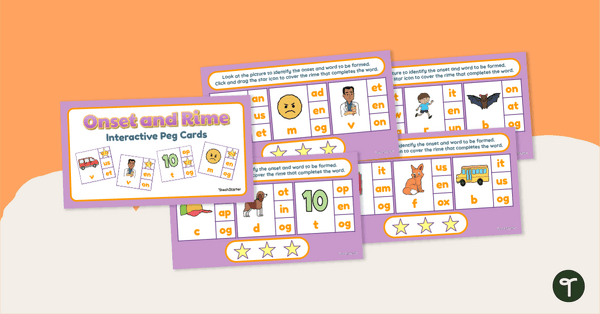
Onset and Rime - Interactive Peg Cards
Form words by blending onsets and rimes using this interactive Google Slides activity.
- Plus Plan
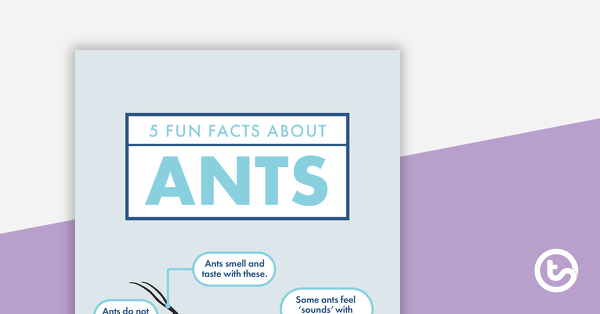
5 Fun Facts About Ants - Read and Respond Worksheet
A '5 fun facts ...' information sheet and worksheet.
- Free Plan
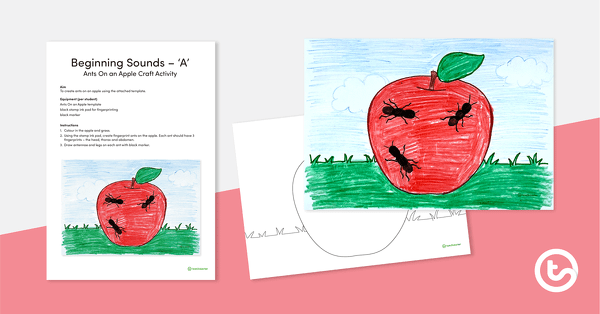
Beginning Sound Craft – A – Ants On an Apple
An initial sounds activity to introduce the sound 'a'.
- Plus Plan
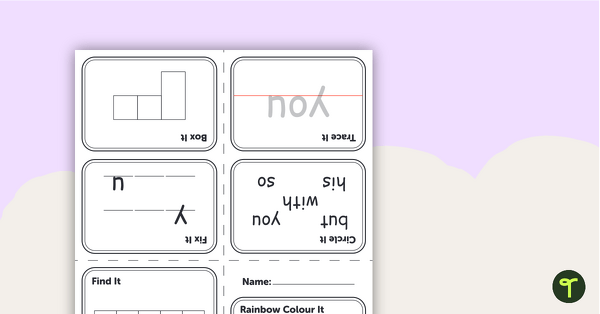
‘You’ Sight Word Little Book
A little book with activities for the word ‘you’.
- Plus Plan
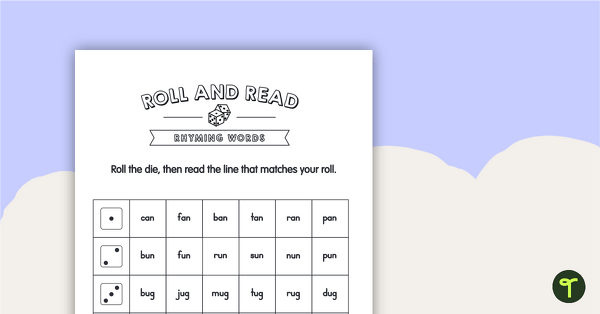
Roll and Read – Rhyming Words
A fun game for students to practice reading rhyming words.
- Plus Plan
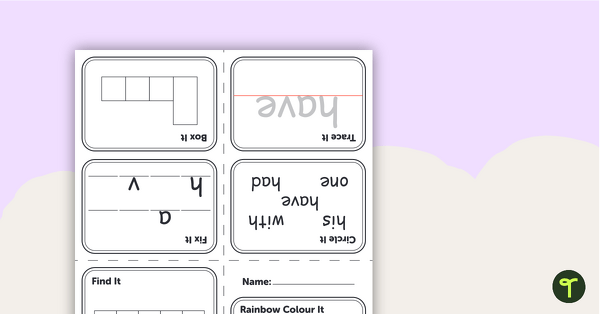
‘Have’ Sight Word Little Book
A little book with activities for the word ‘have’.
- Plus Plan
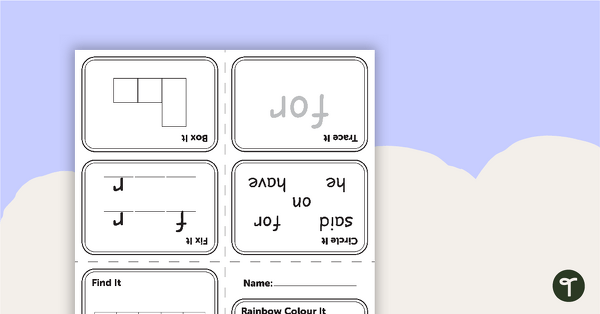
‘For’ Sight Word Little Book
A little book with activities for the word ‘for’.
- Plus Plan
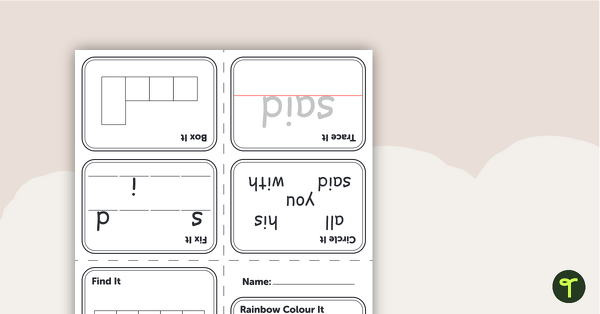
‘Said’ Sight Word Little Book
A little book with activities for the word 'said'.
- Plus Plan
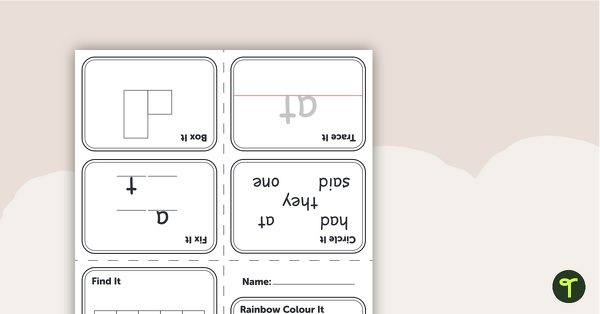
‘At’ Sight Word Little Book
A little book with activities for the word 'at'.
- Plus Plan

‘As’ Sight Word Little Book
A little book with activities for the word 'as'.
- Plus Plan
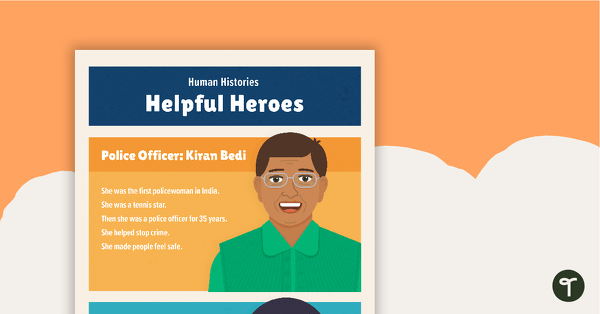
Human Histories: Helpful Heroes – Comprehension Worksheet
A comprehension worksheet for an article about people around the world who have dedicated their lives to helping others.
- Plus Plan
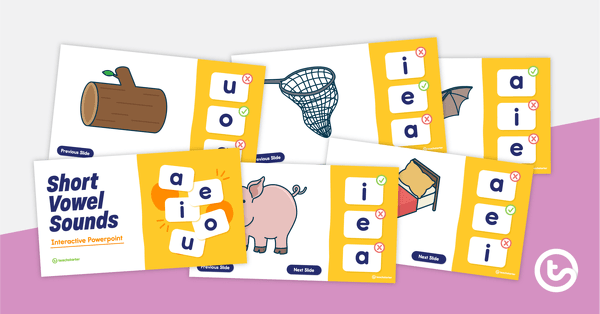
Identifying Short Vowel Sounds Interactive PowerPoint
An interactive quiz to practise identifying short vowel sounds in words.
- Free Plan
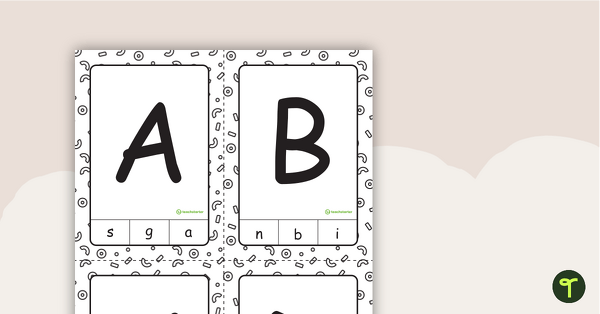
Upper and Lowercase Peg Cards
An upper and lowercase matching activity combined with a fine motor activity for the early years classroom.
- Free Plan

What Toy Am I? - Toy Definition Match Up Game
A set of 20 puzzle cards for students to match pictures of toys to their definition.
- Plus Plan
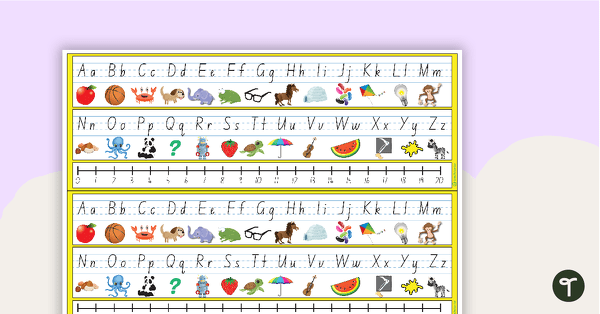
Desk Plate Alphabet and Number Line with Pictures - 0-20
Desk plates with the alphabet, pictures and 0-20 number line.
- Plus Plan
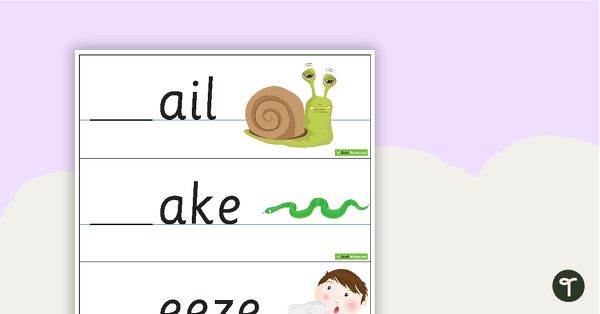
Initial S Blend Cards
A resource to help students identify the S blend at the beginning of a word.
- Plus Plan
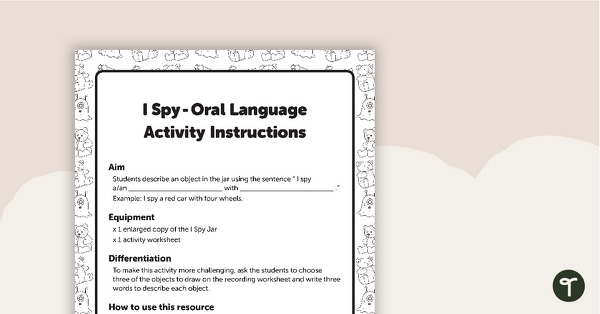
I Spy - Oral Language Activity
A fun activity to encourage the development of oral language.
- Free Plan

Activating Prior Knowledge - Comprehension Strategy Poster
A poster explaining how to activate prior knowledge before reading.
- Plus Plan
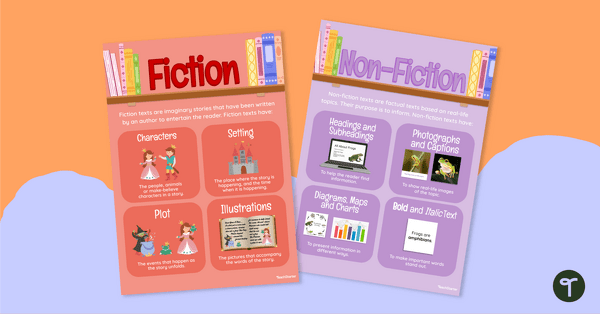
Fiction vs Non-Fiction Posters
Teach students the difference between fiction and non-fiction with this set of two classroom posters perfect for early years classrooms.
- Plus Plan
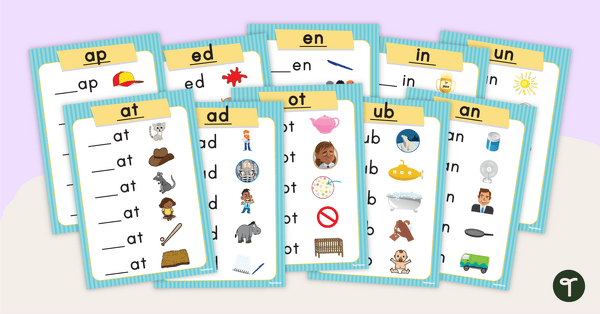
Word Family Worksheet Pack - CVC Words
Consolidate your students' understanding of onset and rime with this set of 20 worksheets.
- Plus Plan

Missing Letter Alphabet Cards
A resource to help students identify the first letter of each word.
- Plus Plan
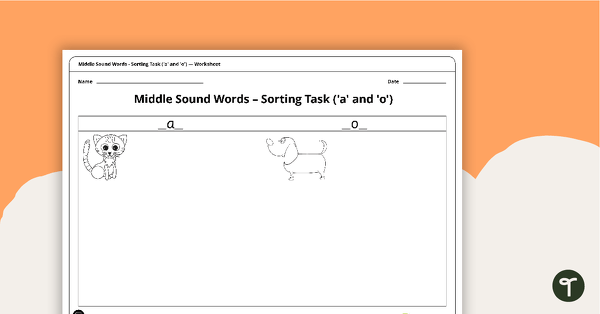
Middle Sound Words - Sorting Task ('a' and 'o')
3 different sorting tasks to use with students when learning about the 'a' and 'o' middle sounds.
- Plus Plan
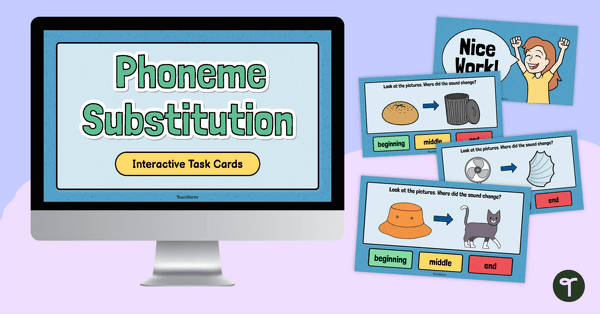
Phoneme Substitution Digital Activity
Explore phoneme substitution with your students using this interactive set of task cards using images.
- Plus Plan

Story Bag Surprise - Story Elements Digital Activity
Introduce and explore different story elements with this story bag surprise digital activity for the whole class to enjoy.
- Plus Plan
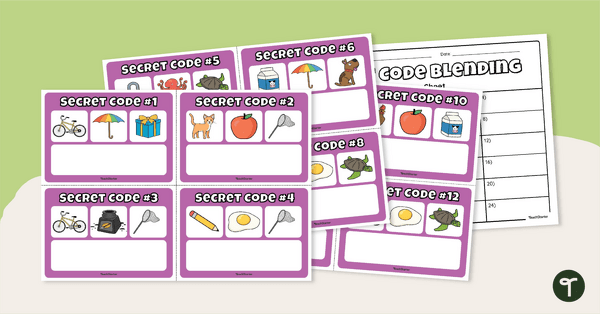
Secret Code Phoneme Blending Task Cards
Explore phoneme blending with this set of engaging secret code blending CVC word task cards.
- Plus Plan
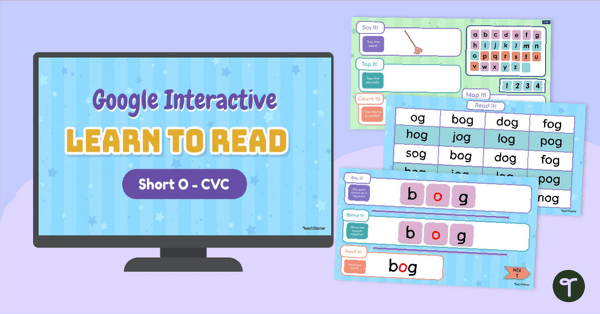
Learn to Read Short O - Daily Phonics for Kids
Teach your students to read short O words with a daily digital phonics instructional slide deck.
- Plus Plan
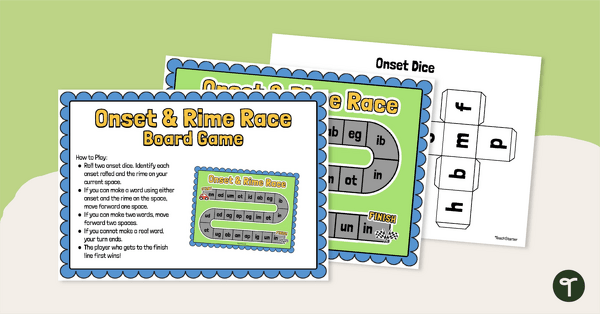
Onset and Rime Race Board Game
Explore different onset and rime words with this fun and engaging race to the finish onset and rime game board.
- Plus Plan
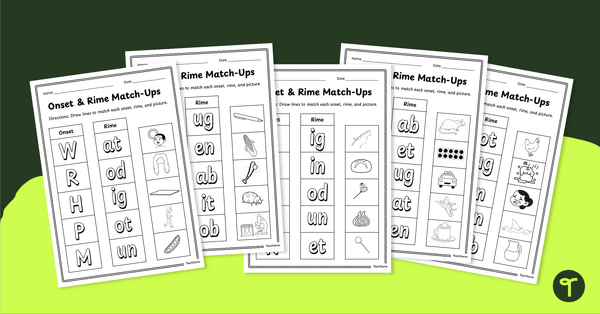
Onset and Rime Match-Ups Worksheet Pack
Practise matching onset and rime with simple CVC words with this set of matching worksheets.